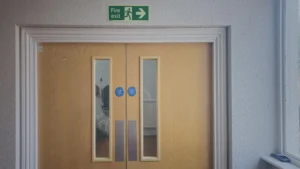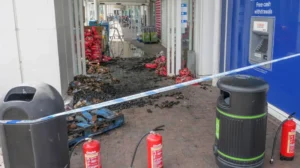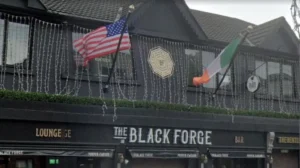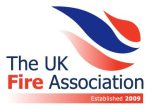When it comes to versatility, few fire extinguishers compare to dry powder.
Capable of tackling multiple types of fire, they’re often seen as an all-round solution for high-risk areas.
But while dry powder extinguishers are effective in many situations, they also have some important limitations.
In this guide, we’ll look at what they do best, where to use them, British Standards to be aware of, and how ESI can help you keep your fire safety measures compliant and effective.
What Are Dry Powder Fire Extinguishers For?
Dry powder extinguishers are effective on:
- Class A fires: Solids such as wood, paper, and textiles
- Class B fires: Flammable liquids like petrol and solvents
- Class C fires: Flammable gases
- Electrical fires: Suitable for use on live electrical equipment
The powder works by smothering the fire, cutting off the oxygen supply and stopping the chemical reaction sustaining the flames.
Where Should Dry Powder Fire Extinguishers Be Used?
Because of their versatility, dry powder extinguishers are often chosen for:
- Garages and workshops
- Industrial sites and factories
- Vehicle and transport applications
- Outdoor locations where wind and weather are factors
However, dry powder extinguishers create a lot of dust and mess, which can damage sensitive equipment or obscure visibility in enclosed spaces.
This is why they are not generally recommended for offices or server rooms.
British Standards and Compliance
Dry powder extinguishers must meet BS EN 3 requirements, including performance, design, and labelling (blue label).
They also need to be commissioned, serviced, and maintained according to BS 5306-3.
Commissioning New Fire Extinguishers
Commissioning should always be performed on site by a qualified technician and includes:
- Checking body integrity and pressure
- Verifying correct weight
- Applying the correct maintenance record
- Ensuring the extinguisher is mounted properly with suitable signage
Servicing Requirements
Annual servicing is required to remain compliant with BS 5306-3.
This includes:
- Checking weight and pressure
- Inspecting hose, nozzle, and safety pin
- Confirming the powder is not clumped or blocked
- Verifying clear labelling
Every five years, dry powder extinguishers require an extended service.
This involves discharging the unit, inspecting the inside, refilling or replacing it, and re-pressurising.
Signage Requirements
Fire extinguisher signs are a legal requirement. Dry powder extinguisher signs must indicate:
- The fire classes it can be used on
- Restrictions or cautions, including avoiding confined spaces due to reduced visibility
How ESI Can Help
At ESI, we offer a complete range of services for dry powder extinguishers:
- Supply: Quality, BS EN 3-certified extinguishers from trusted manufacturers
- Install: Expert commissioning and placement according to your fire risk assessment
- Maintain: Annual servicing and five-year extended servicing to keep you compliant
- Decommission: Safe removal when extinguishers reach end of life
- Recycle: Responsible disposal and recycling of units and contents
Stay Safe, Stay Compliant
Dry powder extinguishers are one of the most effective tools for protecting your premises from multiple fire risks, but they need to be chosen, installed, and maintained properly.
Contact ESI today for advice, installation, or a free site survey to make sure your fire safety measures are effective and fully compliant.











